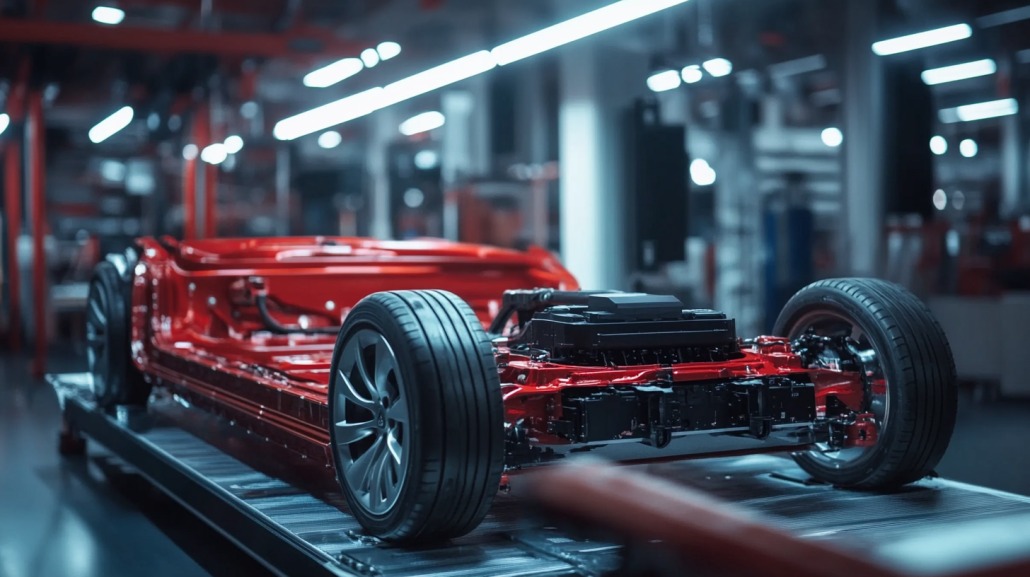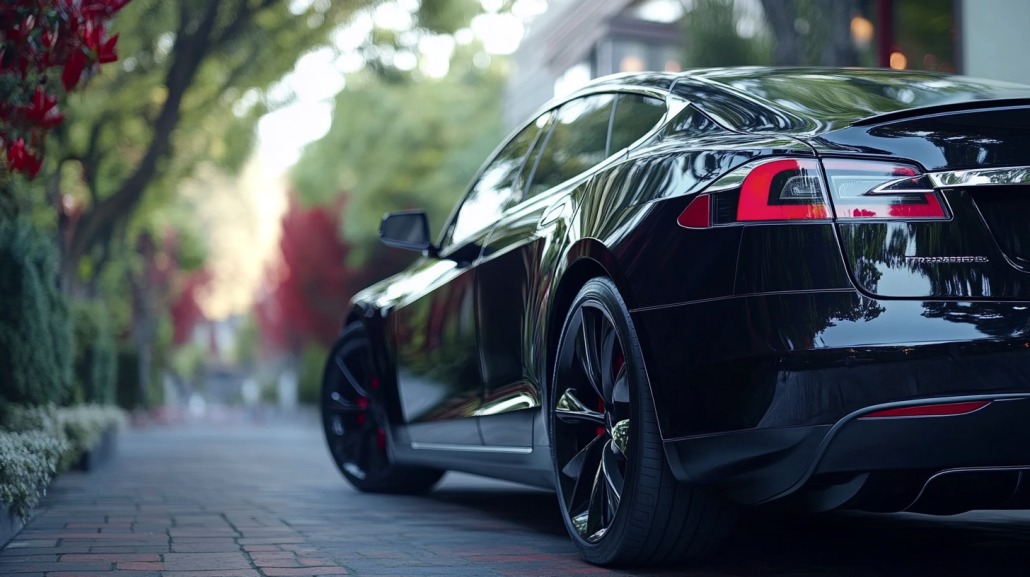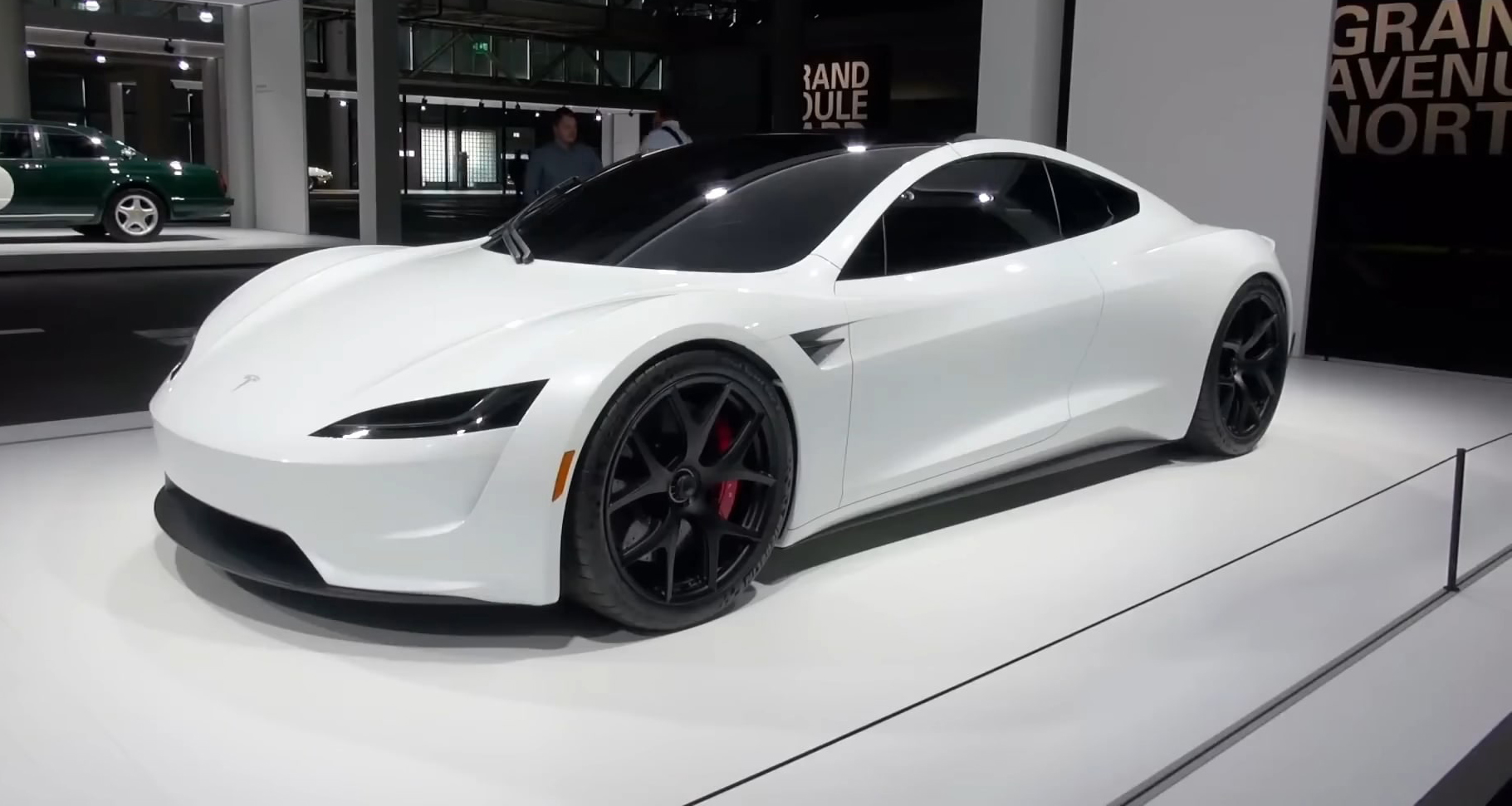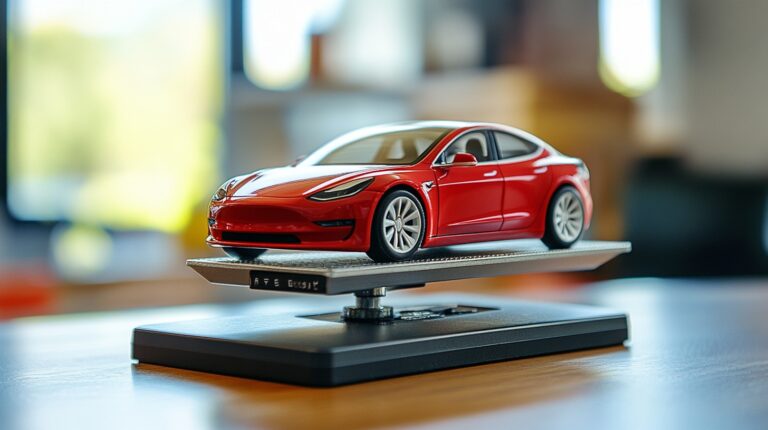Tesla’s vehicle weight plays a significant role in shaping overall performance, efficiency, and driving dynamics. Tesla models, in particular, often outweigh many internal combustion engine (ICE) cars due to specific engineering choices.
Weight affects multiple factors, including range, acceleration, handling, and energy consumption.
- Battery size
- Motor power
Yet, Tesla vehicles often deliver surprising performance despite their mass.
A Model 3 Standard RWD won’t weigh the same as a Model X Plaid with triple motors and AWD.
Model updates also introduce structural and technological changes that affect overall weight distribution and gross vehicle limits.
Why Do Teslas Weigh So Much?
| Model | Trim | Curb Weight (lbs) | GVWR (lbs) |
|---|---|---|---|
| Model X | Long Range | 5,219–5,185 | ~6,250 |
| Plaid | 5,410–5,390 | ~6,164 | |
| Model S | Long Range | 4,560–4,561 | ~5,452 |
| Plaid | 4,765–4,766 | ~5,657 | |
| Model Y | Long Range AWD | 4,381 | 5,240 |
| Performance AWD | 4,416 | 5,712 | |
| Model 3 | RWD (Standard Range) | 3,582–3,880 | 4,711 |
| Long Range AWD | 4,052–4,065 | 4,883 | |
| Performance AWD | 4,065 | 4,893 |
Weight in Tesla vehicles comes primarily from one critical source: battery packs.
Unlike gasoline-powered engines that are compact and relatively lightweight, lithium-ion batteries needed for long-range EV travel average over 1,000 pounds.
Electric motors also contribute. Single-motor setups are modest in size, but dual-motor and tri-motor configurations quickly increase curb weight. In the Plaid models, three high-output motors not only enhance speed but also bring extra pounds.
Tesla has worked to minimize excess weight with techniques such as aluminum chassis construction and giga-press technology for mega-cast parts.
Safety remains a non-negotiable priority. Reinforcements built into the frame provide additional protection during high-speed collisions.
Crumple zones, battery armor, and underbody shielding all add weight, but each plays a critical role in occupant safety.
Heavy doesn’t mean inefficient. Tesla compensates with clever engineering and motor tuning, making even the heaviest models fast, agile, and efficient by EV standards.
Historical Weight Trends

Tesla’s approach to vehicle weight has shifted over the years, reflecting progress in materials, structural integration, and battery design.
Comparing past models to their current versions reveals a deliberate effort to streamline mass while enhancing strength, safety, and range.
Older Model S and Model X vehicles produced between 2020 and 2021 carried slightly more weight than the 2023 versions.
Engineers introduced subtle yet effective changes aimed at refining body architecture and reducing unnecessary mass.
- Use of high-strength aluminum alloys in chassis design
- Replacement of multi-part assemblies with large, single-piece castings
- Revised suspension geometry and lightweight components
Newer Model Y builds, particularly those utilizing the 4680 structural battery packs, offer clear evidence of this weight-conscious strategy.
These battery units double as integral elements of the vehicle’s floor, eliminating redundant framing and floor panels.
- Structural battery pack integration adds rigidity while cutting total weight
- Rear underbody giga-castings reduce welding points and boost strength
- Streamlined interior design with reduced component overlap
Attention to manufacturing efficiency has also contributed. Fewer parts mean fewer welds, bolts, and brackets, each gram counted when optimizing for range and handling.
Less material doesn’t equate to reduced safety or performance; smarter engineering fills the gap.
Tesla continues testing advanced lightweight composites, next-generation battery materials, and simplified assembly methods.
Impact of Weight on Performance
Weight plays a complex role in how a Tesla drives, accelerates, handles, and manages energy. Heavier doesn’t always mean slower.
Heavier Teslas like the Model S Plaid still outperform lighter trims due to more powerful setups and advanced motor systems.
Acceleration, Efficiency, and Handling
Weight in Tesla vehicles affects more than just how heavy a car feels. It changes speed dynamics, efficiency, range, and driver control.
Tesla engineers have carefully structured each model so that added weight doesn’t necessarily mean performance loss. In fact, in many cases, the heaviest Teslas are the quickest.
Speed vs. Weight
Acceleration figures reveal an unexpected relationship. Heavier models such as the Model S Plaid outperform lighter variants in 0–60 mph sprints due to powertrain layout.
Tri-motor configurations provide immense torque, pushing heavy bodies forward with astonishing ease.
- Model S Plaid: Reaches 0–60 mph in under 2 seconds
- Model X Plaid: Despite weighing over 5,300 lbs, achieves supercar-level acceleration
- Lighter trims: Slower, despite reduced mass, due to fewer motors
Weight alone doesn’t determine how fast a Tesla accelerates. Battery performance and motor count make the difference.
Efficiency and Range Implications
Lighter models offer advantages in range. They consume less energy per mile, especially when combined with smaller wheels and minimal features.
Heavier models tend to have slightly reduced efficiency but make up for it in speed and features.
- Model 3 RWD: Known for top miles per kilowatt-hour
- Performance trims: Slightly reduced range due to motor power and added hardware
- Battery management: Plays a large role in balancing efficiency across different weights
Tesla’s software adjusts torque delivery and battery output to maintain smooth operation across various trims.
Handling and Braking

More weight demands careful engineering to maintain agility and safety.
Tesla integrates hardware and software enhancements to improve driver experience, even in bulkier models.
- Adaptive air suspension: Standard in heavier models like Model X and S
- Regenerative braking: Converts excess kinetic energy into battery charge
- Weight distribution: Enhanced by low battery placement across chassis
Handling remains tight, even in SUVs. Heavier Teslas lean less in corners than expected, due to their low center of gravity and intelligent traction control.
Special Mentions
Now, let us address some special mentions you need to be aware of:
Tesla Semi
| Tesla Semi Specifications | |
|---|---|
| Curb Weight | ~25,000 lbs |
| GVWR | ~82,000 lbs |
| Motors | 4 independent rear motors |
| Estimated Range | Up to 500 miles |
| Primary Use Case | Commercial freight |
| Emission Profile | Fully electric, zero tailpipe emissions |
Tesla Semi steps into commercial transport with specs tailored for heavy-duty performance. Designed to compete directly with diesel long-haulers, it emphasizes hauling power, driver comfort, and emission-free operation.
Announced curb weight is around 25,000 pounds, with a Gross Vehicle Weight Rating (GVWR) of up to 82,000 pounds, a legal exception granted to electric trucks under U.S. regulations.
One of the most impressive aspects lies in its instant torque delivery, a product of its quad-motor setup. Despite its massive scale, Semi can accelerate with surprising smoothness, and its regenerative braking helps recover energy on downhill runs.
Battery plays a central role, reportedly offering up to 500 miles of range per charge, depending on the payload and route conditions.
Tesla Cybertruck
Spotted the new Tesla Cybertruck! It’s wicked cool and fast!!! @Teslarati 🔥 #Tesla #cybertruck #teslarati pic.twitter.com/JMvYqbpFjP
— Levi (@Levi19767811) October 1, 2023
| Tesla Cybertruck Specifications | |
|---|---|
| AWD Weight | ~6,600 lbs |
| Cyberbeast Weight | ~6,843 lbs |
| Construction | Ultra-hard 30X cold-rolled stainless steel |
| Suspension | Adaptive air with variable ride height |
| Target Audience | Off-road drivers, utility-focused buyers |
| Estimated Range | Up to 340–500 miles (trim-dependent) |
Cybertruck brings aggressive styling, raw power, and a radically different body architecture. Engineered for off-road adventures and utility work, this all-electric pickup departs sharply from conventional design.
AWD version is estimated to weigh around 6,600 pounds, while the tri-motor Cyberbeast model edges closer to 6,843 pounds.
Both models use stainless steel exoskeletons, eliminating traditional paint jobs and reducing surface damage during impacts.
Cybertruck is also built for function. It features an adaptive air suspension system, vault storage, and a payload capacity comparable to or exceeding traditional half-ton pickups.
2nd Generation Tesla Roadster

| 2nd Generation Tesla Roadster Specifications | |
|---|---|
| Projected Weight | 4,400–4,700 lbs |
| Battery Pack | 200 kWh |
| Top Speed Estimate | Over 250 mph |
| 0–60 mph | ~1.9 seconds (claimed) |
| Design Focus | Extreme performance, sleek coupe body |
| Release Status | Not yet in production |
Second-generation Roadster signals Tesla’s return to the high-performance sports car category.
Intended to be the fastest vehicle in Tesla’s lineup, it builds on the legacy of the original Roadster but with futuristic hardware and aggressive specs.
Weight is expected to land between 4,400 and 4,700 pounds, with a powertrain that includes a 200 kWh battery pack, a capacity that dwarfs even Tesla’s premium sedans and SUVs.
While full specifications have not yet been confirmed, projections point to blistering acceleration and track-ready handling. Musk once claimed it could do 0–60 mph in 1.9 seconds, but real-world testing will eventually determine accuracy.
The Bottom Line
Tesla vehicle weight reflects a balance of energy storage, power delivery, and engineering sophistication.
Massive battery packs, robust motor configurations, and safety-first design drive higher curb weights across the lineup.
Despite weighing more than comparable ICE vehicles, Tesla’s models maintain high efficiency, rapid acceleration, and smooth handling through integrated tech and smart design.

